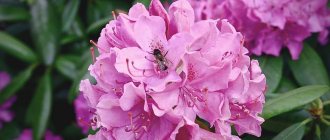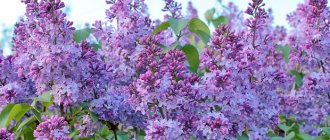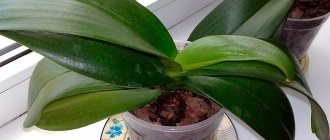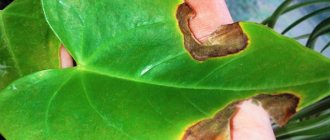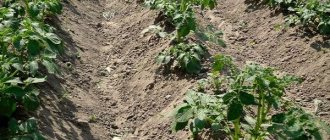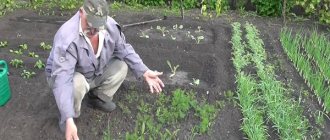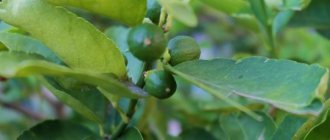Features of petunia
The shape of the plant looks like a bush. The height of petunia reaches 15-70 centimeters. The branches are densely located. They can stand or creep. Dark green, as well as simply green leaves are arranged alternately and take the shape of a 5-12 centimeter oval. Leaves and stems are slightly pubescent. Peduncles on short stalks hold flowers on themselves. There are regular and irregular, simple and terry type, axillary and terminal, there are even fringed ones.
Terry petunia
The palette of colors is also striking in its diversity. You can see purple, pink, blue, red shades, and even pure white colors. Some have a border and veins of dark shades. Others are decorated with a halo or a whitish star. The plant also bears fruit. This is a kind of box with two doors, inside of which there are seeds.
Petunias are widely used for making flower pots, flower beds, balconies, and also garden areas. It blooms from July until frost hits. Cultivated for only one year.
Petunia: briefly about the flower
Petunia is an annual plant with rounded green shoots and a shallow tap-type root system. Petunia stems can be erect, creeping, short or tall, depending on the variety. The leaves and shoots are covered with dense small fibers. Single petunia inflorescences are funnel-shaped and located on a short peduncle. The edges of the petals, depending on the variety, can be smooth, wavy, corrugated, reminiscent of carnation petals.
Petunia amazes with its variety of colors
The color of petunia flowers is very diverse: from snow-white to blue-black and purple. The colors are bright and may contain contrasting inclusions and edging in various shades. After the end of the flowering period, a small capsule forms on the plant - this is a fruit with seeds, the number of which can reach 300 pieces.
Petunia is not capricious and unpretentious, it can withstand hot, dry weather and mild cold. After transplantation, the plant takes root easily.
Petunia is native to South America, but one of its species also grows in North America. Unlike the Russian climate, where petunias are grown as annuals, in the warm climate of these countries they are perennials. In addition to Russia, Petunia is popular in many European countries, as well as in Central, Middle and South-West Asia.
Growing petunia from seeds
Sowing
When you decide to sow garden petunia in winter, for example, the month of February, then they need to be provided with lighting. Most of those who garden do this work in March. From the second to the fourth week of this month. But since there is not much sun at this time, it is necessary to sow with a reserve, because much less may rise. The substrate must be selected with the following composition: 2 parts of rotted humus, 2 parts of peat, 1 part of sand and 2 parts of turf or soil. It should be light, fluffy and high in nutrients.
Red petunia bud
The container must be filled with this mixture. And on top of it you need to lay a layer one centimeter thick, consisting of sifted substrate. One day before it is planned to plant perennial or annual petunias, this soil should be watered abundantly. This can distribute the seeds evenly. Before planting, they also need to be mixed with sand.
The next step is to distribute the resulting sand over the surface of the substrate, as well as moisten it with a spray bottle. Then the container is covered with film or covered with glass on top. Afterwards it is moved to a place where the temperature remains within 20-23 degrees above zero.
After about 7 days, the first shoots will be visible. They should be ventilated twice every day and moistened with a spray bottle. During this period, it is extremely necessary to maintain a high humidity level inside such a small greenhouse. But this, on the other hand, can lead to blackleg lesions. To avoid such a problem, every day you should remove the accumulated condensation from the surface of the film, and also turn the glass over to the other side.
Petunia bud
In addition to these precautions, the sprouts should be treated with a solution containing weak potassium manganese using a spray bottle. When you see the first plate that has been able to fully form, the cover can be removed from the vessel, the substrate can be covered with a small layer of sand, and the amount and frequency of watering can be reduced.
Seedling care
If you notice that three or four leaves have already formed well, then you need to pick them. But first, the substrate that is in the vessel should be moistened. Using a small stick, carefully pry up the young plant and remove it from the soil, holding it by the leaves. During this procedure, it is important to ensure that the substrate is not shaken off from the roots.
To make a pick, you should prepare a plastic pot for each sprout. You can also use peat, which must be filled with the same substrate. When small plants are planted, they should be watered generously and covered with sheets of paper or lutrasil for 2-3 days.
Photo of terry petunia
At this stage, you should take a responsible approach to caring for the flower. The soil mixture must be constantly moistened. It is impossible to say exactly how many times it is necessary to water, because many factors influence this. Circumstances may be so different that some need to be watered once or twice a week, while others need to be watered twice a day. It will be necessary to loosen the soil around the seedlings from time to time.
A week after planting, the sprouts need to be fertilized regularly. This must be done one by one - the root method and not. Kemira, Mortar, Nitrophoska, as well as other complex fertilizers are suitable for such purposes. It should be possible to dissolve them in water. They need to be diluted using proportions of 25-30 grams per bucket.
Flowering begins differently in different species. Those that belong to the grandiflora can give flowers already 3 months after planting the seed. Types of multiflora – after 2.5 months. Before moving the seedlings to an open space, they need to be hardened off. To achieve the desired result, seedlings need to be taken out into fresh air during the day. This can also be done by moving the seedlings to a cooler place.
Different growing methods
In addition to growing seedlings in the ground, there are other, less common ways to grow petunias.
In peat tablets
Many gardeners like to grow petunia seedlings in peat tablets. They are pressed peat in the form of small round washers. Various mineral components and microorganisms are added to them to stimulate the root system and good seedling growth. The washers are covered on top with a special dense mesh.
When absorbing water, the peat swells, and this mesh will prevent the tablet from disintegrating. Excess moisture and air necessary for aeration of the plant roots pass through it perfectly. The mesh is impregnated with a special substance, and no harmful microorganisms or pathogenic fungi get to the roots of the plant.
The time for planting petunia seeds in peat tablets does not differ from planting in the ground. Also from mid-February to March. The best tablets for planting petunias are those with a diameter of 3.5 to 4.5 cm.
Before use, the tablets should be soaked in warm water for 5-10 minutes. Then you should put no more than one or two seeds in each puck and lightly water it. Just like in the ground, the seeds should not be buried, otherwise it will be difficult for them to break through.
After sowing, the tablet-washers should be placed in a warm, well-lit place. The air temperature should be at least 20-25oC. Constantly monitor the moisture content of the tablet and rehydrate as necessary. With proper care, the first shoots will appear in 7-10 days.
You can place tablets with seeds in mini greenhouses. It is necessary to care for such greenhouses, just as in the case when the seeds are planted in the ground - ventilate, moisten.
Watering can be done in various ways:
- Pour water into the pan;
- Spray the tablets themselves from a spray bottle with small holes.
After the seedlings have germinated, when there is not enough space for their root system in the tablet, you need to remove the mesh from it and place them together with the tablet in a container with nutritious soil.
If larger tablets were used to grow seedlings, then when planting in a permanent place, it is necessary to remove the mesh from the washer and plant the seedling in the prepared hole along with a peat lump.
Growing petunia in peat tablets - video
In flowerpots, in pots
Ampelous and cascading types of petunias are most often grown in pots and cache-pots. Beginning flower growers often wonder how many petunias should be planted in one pot or cache-pot? Experienced gardeners say: That up to five plants can be planted in one pot.
The following are perfect for the role of flowerpots:
- Clay and ceramic pots;
- Plastic planters and pots;
- Mayonnaise buckets and other suitable containers.
It is worth considering that no more than one plant should be planted in small containers. You need to make sure that there is a drainage hole to drain excess water. It is convenient to put a layer of moss or foam rubber on the bottom.
The containers must be filled with a nutrient soil mixture consisting of:
- One part of turf land;
- Two parts of leafy soil;
- One part peat;
- One part of humus;
- A little perlite.
Plant petunia seedlings, but do not immediately take them outside. It is necessary to gradually harden off the plantings by taking the pots out for several hours a day in warm weather, gradually increasing the time.
Once the plants have been placed in place, you need to constantly monitor them. Water, loosen, form a bush, remove faded flowers and seeds.
Planting petunia in open ground
What time to plant
To grow a petunia flower, you need to use loamy soil or fertile sandy loam. Fertilizing the soil before planting will be a good help for its growth. To do this, you can use humus or compost. It is not recommended to use manure for such purposes - it can lead to fungal diseases.
If we talk about the place where it is best to grow a petunia plant, then it should, among other things, be well lit by sunlight. This flower relates to changes in weather conditions, temperatures are calm. But it is better to choose a day when the likelihood of frost is reduced to zero. Otherwise, it will have a bad effect on the development of seedlings.
Cascade petunia
From this we can conclude that the right time for such work is the last days of May - the beginning of June.
Landing Features
It is best to plant in the evening or choose days when the weather is cloudy. Then the seedlings will not get sunburn, but will be able to take good roots. Petunias need to be watered first, and then planted in the ground. This will help avoid damage to the root system.
How many centimeters you need to save between seedlings depends on the variety. For multi-flowered petunia - 15-20 centimeters. Large-flowered - no less than 20-25 centimeters. Ampelous flowers need a distance of approximately 0.3 meters. When the plant is planted in the ground, it is watered, and the part that is closer to the root is mulched with peat. This reduces the risk of roots drying out and freezing at night. Before planting, a few days before, it is better to loosen and fertilize the soil.
History of selection and species diversity
Petunia is one of the main types of ornamental plants that can be found on balconies and terraces in summer. Hanging from flower pots, they form fabulously colorful cascades of flowers or fill flower beds, containers, and baskets.
Wild petunias growing in South America were discovered by conquistadors in the 16th century. Local tribes called the white, long-flowering climbing plants petun, which translated meant useless tobacco. The plant was not valued and was considered useless. It was not until the first half of the 19th century that other European travelers imported various colorful varieties of petunia from Argentina and the plant was officially classified as a member of the nightshade family. By crossing two wild varieties, Petunia axillaris, with large white flowers, and Petunia violacea, with purple flowers, the hybrid Petunia x hybrida, known today as garden petunia, was obtained.
Photo. Petunia axillaris
Photo. Petunia violacea
Photo. Petunia x hybrida
Until the 1990s, mainly varieties of petunias were known with raised and large shoots with flowers up to 10 cm in diameter. Plants propagated by seeds were used mainly for edgings and flower beds. Then petunia as an ornamental plant underwent a real revolution. It began with the development of the first hybrid by the Japanese breeding company Santora with drooping shoots and extremely intensive growth - under optimal conditions, shoots grow up to 3 cm per day. The name of these plants - Surfinia - is known to every flower lover.
Since then, the history of petunia cultivation has accelerated significantly - intrigued gardeners are creating new varieties with pink, burgundy, red, purple, blue, white, yellow cup-shaped flowers, as well as two-color petals, spotted and colored veins. Today, petunia includes about 40 species from the nightshade family. Of growing importance as an ornamental plant is primarily the garden hybrid known as garden or common petunia (Petunia × hybrida).
Many varieties have been developed from it. The resulting varieties are classified according to the structure of flowers into:
- multiflora (multiflora) - multi-flowered petunia with numerous medium-sized flowers (5 cm in diameter);
- grandiflora (grandiflora) - with large flowers up to 10 cm in diameter;
- milliflora (miliflora) - with small flowers (not exceeding 3 cm in diameter) and compact shape.
Differences appear in the length of the shoots:
- The longest cascading petunias, with shoots reaching a length of 2 meters, received a separate title - surfinii.
- The nickname Nana means plants with shoots growing up to 40 cm.
- Media are medium-sized plants reaching a length of approximately 40-80 cm.
- Pendula - varieties with long shoots, reaching more than 80 cm in length.
This classification is variable; new varieties appear, forming more groups.
New groups of ampelous petunias have appeared, for example:
| Cascadia | |
| Fortuna | |
| Supertunia | |
| Conchita | |
| Surprise | |
| TinyTunia |
These varieties are propagated only by cuttings. All of them, along with seed-propagating petunias, are included in the garden species Petuniahybrida.
Surfinias, like the miniature Million Bells flowers, are also petunias and are grown in a similar way. These flowers are native to South America, and their climatic requirements mean that in our country they can only be grown as annual plants from seedlings.
Other groups look like miniature surfinias, but have differences invisible to the naked eye, such as the number of chromosomes and the fact that they do not interbreed with petunias. For example:
- Celebration;
- Superbells;
- MiniFamous.
They are included in a separate group, Calibrachoa, named after the Mexican pharmacist Antonio de Cali Brachoa. Plants are usually more tolerant of unfavorable environmental conditions and are easier to grow - flowers can grow in partial shade and are resistant to fungal diseases.
Black petunias have recently appeared. Black varieties were presented in 2011 at the horticultural exhibition in Essen. For example:
- Black corduroy (BlackVelvet) – black with a purple tint;
- Phantom - has 5 longitudinal yellow spots, like a yellow star.
Interesting! Botanically, the cute petunia plants are related to tobacco, tomatoes, and belong to the nightshade family! Some gardeners graft petunia onto a tomato plant for decorative purposes, resulting in a tomato bush blooming with petunia flowers. Such an unusual plant will become the highlight of the garden.
Caring for petunia in the garden
Growing this representative of the flora does not entail many problems, but to do this you still need to know some rules of care. Drought does not seriously injure it, but it still needs to be watered in the summer. Varieties with small flowers can be watered less than those with larger flowers. Water should be directed directly to the root. If this is not done, its fragile flowers will be damaged. The next day after this procedure, the soil needs to be loosened and weeds removed.
Petunia in the garden
If you want long, more spectacular flowering, the plant needs to be fertilized regularly. The first time this must be done 7 days after immersion in open ground. Afterwards, fertilize every 10 days until August. For such purposes, a complete fertilizer with a high potassium content is used. Sometimes you can use organic fertilizers - mullein infusion and humic fertilizers.
When and for how long does petunia bloom?
Petunia has very small, microscopic seeds. Sowing it directly into open ground is irrational and difficult in terms of further care. Therefore, this flower is grown through seedlings. The seeds are sown in March, and at the beginning of May the seedlings are transplanted into flower beds. Moreover, most of the seedlings already have flowers. Petunia blooms profusely and luxuriantly, despite the heat, wind, and lack of moisture. Flowering continues until frost and stops only because the plants simply die from frost.
Petunia propagation by cuttings
Representatives of double and ampelous varieties are propagated by cuttings. This method is also used for mini-petunias (calibrachoa). Terry flowers are propagated in the last weeks of winter or in the early weeks of spring. Mini petunias, ampelous - all year round. In this situation, you will need to add light from a lamp and heat. The temperature will need to be maintained at 21-24 degrees above zero.
The cuttings that are located at the top must be cut so that two or three pairs of leaves remain on them. You only need to leave the top two. Those that remain need to be shortened in half. The cuttings are placed inside the same soil mixture that was used for seedlings. On top of it you need to lay a layer of perlite or sand 2-2.5 centimeters thick, after which it is spilled with a fungicide solution.
When planting cuttings, maintain a distance of 1.5-2 centimeters between them. The vessel is covered with glass on top.
There are means that accelerate growth. They should not be used because the flower takes root quite quickly. The soil mixture must be kept moist at all times. For this result, it is moistened with a spray bottle twice a day. But, on the other hand, the flower may develop blackleg due to dampness. Representatives of terry and hanging varieties take root after about seven days, mini-petunias - after 14 days.
When the length of the roots reaches 1-1.5 centimeters, the sprouts can be transferred to separate containers. It is better to take the width at least five centimeters. To achieve a more lush bush, pinch out 4 or 5 leaves from the top of the plant. The resulting stems can be used as cuttings. After about 2 weeks, pinching can be repeated. After 1.5 months they can be planted in pots 11-13 centimeters wide. Caring for cuttings includes the same steps that apply to seedlings.
Mini-plants and hanging plants need a large space, so it is recommended to hang the containers.
Pruning at home
Pruning is carried out in several stages:
- In June, before flowering, the plant is pinched - the ends are cut off; this procedure allows you to preserve the splendor of the bush. You need to trim the ends above the 5th internode;
- In July, dried leaves and buds are removed so that seeds do not ripen in them;
- In August, petunia partially loses its vigor; at this time, pinching is carried out again so that the plant resumes growth;
- After flowering, it is necessary to remove dried buds. If you plan to collect seeds, pruning is carried out only after collecting the seed boxes.
Trimming
Diseases and pests
When you responsibly follow the rules of how to grow and care for a flower, you will not encounter the problem of disease. But if you ignore them, there is a risk of the following diseases:
- Late blight
- Chlorosis
- Blackleg
- Gray rot
The following insects can also settle:
- Aphid
- Thrips
- Spider mite
- Slugs.
Petunia Bush
To combat each of the problems, special means are used.
Problems in growing
Diseases affect petunia due to systematic errors in care. With excessive watering or lack of moisture, petunia may turn yellow or dry out. Among the diseases, the plant is affected by gray rot, blackleg, late blight, and chlorosis.
If a plant is infected with a virus, it cannot be cured, so it is better to remove such petunia from the site as soon as possible so as not to infect other flowers. The most dangerous pests for petunia are thrips, spider mites, aphids, and slugs. The presence of a particular pest or disease can be diagnosed by symptoms.
Petunia pest damage.
Fungal diseases of petunia
- Blackleg is a common problem with petunias; it occurs with excessive watering, dense planting of bushes, and acidic soil. The lower part of the stem darkens, becomes watery, rots, and the flower dies. The danger lies in the rapid spread of the pathogen through the soil and infection of neighboring plants. When symptoms appear, petunias should be sprayed with a solution of preparations containing metalaxyl, mancozeb or oxadixil. It is prepared at the rate of 20-25 g per 10 liters of water.
- Gray rot is characterized by the appearance of a light brown rash or spotting on the leaves, which then becomes covered with fluff. The affected parts wither and then rot. The disease is provoked by dense planting, low temperatures, excessive humidity, lack of light and overfeeding with nitrogen fertilizers. The affected parts of the plant must be removed immediately, use the chemicals Maxim and Skor, and the biological product Integral. If the plant is heavily infected, it is simply destroyed.
- When affected by white rot, gray, weeping spots appear, which, with high humidity, become covered with a white coating. The impetus for its occurrence is an increase in humidity and a decrease in temperature. The fungus easily spreads throughout the garden plot, even through the grower’s clothing. The control measure is liming and digging the soil, adding the drug “Trichodermin” to it (2 grams per hole). At the first signs of infection, petunia is treated with a solution of the drug “Maxim” or “Fitosporin”, and the soil around is sprinkled with ash.
- Brown spotting is accompanied by the appearance of rust-colored spots on the leaves. At first they are round, then they stretch out. Pathogenic fungi persist on fallen leaves; their appearance is provoked by high air humidity and mechanical damage to the plant. At the first symptoms and as a preventive measure, petunias are sprayed with copper-containing preparations once a week.
- As late blight develops, the stem at the base turns brown and rots. It is provoked by high humidity and cold nights with heavy dew. To combat, copper-containing preparations are used, as well as products based on mancozeb and oxadixil. They are suitable for both prevention and treatment at the first signs.
The best measure to combat any of the above diseases is to prevent its occurrence. Do not plant petunias too closely, water them abundantly and often, or increase the humidity excessively.
Viral and bacterial diseases
If a viral disease occurs, the affected plant must be urgently removed from the site so that other plants do not become infected. It is useless to fight the virus.
- A plant affected by leaf galls has a short main stem. It develops poorly, produces few flowers, and thick and short shoots appear at the base.
- The cucumber mosaic virus appears on flowers as yellowish or gray spots, and on leaves as mosaic light or dark green spots.
- Potato Y virus is accompanied by lightening of leaf veins. The plant's internodes are shortened and it appears dwarf.
- With tomato aspermia virus, petunia flowers do not develop correctly. The petals become distorted, become smaller, and crack. Often the plant does not bloom at all.
- Tobacco necrosis virus forms light green spots on the leaves that gradually merge. First the leaves die, and then the whole plant dies before it has time to bloom.
- Potato virus X is accompanied by bending of the tips of the leaves and the acquisition of a mosaic color.
Leaf galls affect petunia.
Pests
Pests pose the greatest danger when growing seedlings.
- Aphids deform young shoots and leaves, leading to general wilting of the plant. The larvae are visible to the naked eye, shiny dew appears on the plant, and an increased interest of ants in aphid colonies may be observed. They get rid of aphids by spraying with one of the preparations: “Aktara”, “Konfidor”, “Fufanon”, “Decis”.
- Whitefly causes leaves to yellow and wilt. The insect is caught with glue traps, and if the plant is severely affected, chemical preparations “Aktara” and “Confidor” are used.
- Thrips infect flowers and the upper side of leaves - shiny streaks or grooves appear, which then merge into solid spots. Black small dots are visible on the affected areas - insect excrement. They fight only with the help of chemicals - “Aktary”, “Intavira”, “Confidora”.
- When affected by spider mites, the leaves become lighter and small yellow dots appear. Gradually they dry out, and cobwebs are visible on the leaves. To combat the pest, the drugs “Neoron” or “Apollo” are used.
- Slugs leave holes in leaves. To combat them, the chemical preparation “Creotsid” 50 or “Meta” is used, and superphosphate is scattered over the ground.
Collecting seeds
Seeds need to be collected only when they are fully ripe. Shrubs are marked in advance, from which seeds will then be collected. This is usually done when they bloom. In this type of work, buds located below are used for the reason that they ripen faster. When the bud is fully grown, you need to time it for 2 months. After this time, the seeds will be completely ready for collection. Their size is so tiny that one box holds about a hundred (0.5 mm).
The boxes should be shaken and the necessary seeds will be extracted from them. Afterwards they should be placed in envelopes and the year of collection, variety and color should be written. Another way is to cut the boxes and place them in the house. They are kept at room temperature for 3-4 months. When such an operation is carried out correctly, the seeds can germinate for another four years.
Is it possible to resume flowering if petunia has faded?
Petunia is an annual plant, so by the end of summer it quite naturally begins to fade. However, it is possible to extend its flowering period. To do this, use the so-called haircut. The shoots are cut by a third, leaving approximately 4-5 cm, watered and complex fertilizers for flowering plants are applied. After 1-2 weeks, new greenery will grow, buds will begin to form again, and the bushes will become “younger.”
This is interesting! Experienced flower growers who like to experiment, with the onset of cold weather, dig up petunia from the flowerbed and move it into the house. Despite the fact that the life cycle of the plant is limited to one season, in this way it can be slightly increased.
After flowering
If you want to save the flower, you need to remove it from the ground in October, and remove all the branches from the bush. The shrub is moved to a container in a cool place. It will need to be watered occasionally to keep the soil moist enough. When the month of February arrives, the plant is moved to a windowsill that is well lit by the sun. It must be warm there.
Petunia grandiflora
Now you will need to water it more often. When 2-4 pairs of leaves are formed, the plant is cut off at the “heel” and moved to a flowerpot. They must be filled with soil with nutritional properties, and a layer of sand placed on top of it.
The container is also covered with film or glass is placed and moved to a place where there is moderate shade. For 20 days you will need to water, ventilate and spray the sprout. By this time the shoots should have taken root. Afterwards I transplant them into cups. They are transferred to open ground at the same time as the seedlings are transplanted.
In the fall, faded bushes that are no longer needed should be removed from the ground and burned. After this, the soil must be dug up.
Types and varieties of petunias with photos and names
- Terry petunia - its uniqueness is its fringed edges. The flower is quite impressive in size. For this reason, escape must be protected. For example, due to strong winds it may simply break.
- Petunia grandiflora (large-flowered) are large beauties, but there are few of them. More fragile - due to rainy and windy weather they can be damaged. Grown on terraces, balconies and indoors.
Terry petunia
- Bush petunia is capable of growing, occupying the entire space with a bright carpet. Sensitive to bad weather conditions.
- Petunia multiflorum - these bushes bloom earlier with miniature elements and remain for a long time. Unpretentious look. The most famous varieties of petunias are: Fantasy, Mirage, Pramcrystals.
- Petunia sophistry - grows and develops quickly. Everything blooms at once with about ten beauties.
- The most beautiful varieties of petunias - the Fantasy series of hybrids, the Low-growing Dream series, the Ultra variety, the Polaris series, Silver, Cherry, Rose, Surfinia, Lilac Surf, Waterfall, Million Bells, Gioconda
